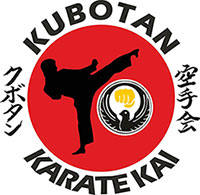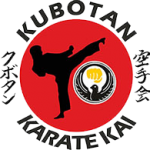DOJO
The Dojo 道場
A Dojo is a Japanese term which literally means “place of the way.” Initially, Dojo’s were adjunct to Temples. In the western world, the term dojo primarily refers to a training place specifically for Japanese martial arts such as Aikido, Judo, Karate or Samurai. The term can also refer to a formal training place for any of the Japanese arts ending in “do”, meaning “way”.
Dojo Kun (Rules) Below is on display at our Dojo entrance.
- Each person must strive for the completion and perfection of one’s character
- Each person must be faithful and protect the way of truth
- Each person must endeavor (fostering the spirit of effort)
- Each person must respect others and the rules of etiquette
- Each person must refrain from violent behavior (guard against impetuous courage)

Dojo kun is a Japanese martial arts term literally meaning (training hall) rules. They are generally posted at the entrance to dojo or at the “front” of the dojo (shomen) and outline behaviour expected and disallowed.
Dojo Etiquette
Upon entering a traditional martial arts dojo, some people may find themselves uncomfortable with the unfamiliar bowing and the many forms of etiquette. Many may feel the bowing and the rules of etiquette are exaggerated and unnecessary. However, just as daily life in the Western world is filled with social manners and customs designed to enable communication without misunderstanding, so too is life in a traditional martial arts dojo. Etiquette and social manners allow us to practice safely as well as develop compassion and mutual respect. The martial arts are a discipline and physical technique is a vehicle for your personal refinement and spiritual growth. The dojo is not a place to display your ego but a place for uplifting and cleansing one’s body, mind, and spirit. Although there are many forms of etiquette to remember, they will become natural as you continue to train. Please do not be resentful if you are corrected on a matter of etiquette, this too is a part of your training. Practicing proper etiquette goes a long way in promoting an ideal atmosphere of harmony and respect. The correct attitude of respect, sincerity, and modesty creates an atmosphere essential to the learning process and safety of each student.
1. Upon entering and leaving the dojo, always perform a standing bow toward the Dojo.
2. Remove your shoes and place them neatly on the shoe rack before entering the dojo. This not only keeps the dojo clean and free of dirt but it also symbolizes leaving your material day, your ego, and your troubles at the Dojo door.
3. Respect your training tools. Your Gi should always be clean and well pressed.
4. Use good personal hygiene. Finger and toe nails should be trimmed short and kept clean to avoid injury.
5. Do not be late for class. Turning up regularly late is disrespectful and is a disruption to your fellow students.
6. Class opens and closes with a bowing ceremony and it is important for you to participate. If you are unavoidably late for class, sit quietly in seiza(kneeling) position at the entrance to the Dojo until Sensei gives you permission to join the class. Do not disrupt the class when joining in.
7. The proper way to sit in the Dojo is in seiza(kneeling). If an injury prevents you from sitting in seiza, you may sit cross-legged with your feet underneath. Never sit with your legs outstretched or lean against walls. You must remain alert and aware of your surroundings at all times.
8. Do not leave the Dojo for any reason without first receiving Sensei’s permission.
9. When Sensei signals the end of a technique or practice session, stop immediately, bow to your partner, and line up with the other students.
10. When receiving personal instruction during class, listen attentively. Perform a standing bow to Sensei when he has finished.
11. Never stand around idly on the mat; you should be practicing or, if necessary, attentively waiting your turn.
12. If you know the technique being studied and your training partner does not, you may lead your partner through the technique but do not assume the role of the instructor.
13. During class keep talking to a minimum and directly related to what you are practicing.
14. There is no eating, drinking, or gum chewing in the Dojo. There is no smoking anywhere around the Club entrances.
15. In order to prevent injury or damage to personal property, no jewellery should be worn in the Dojo.
16. Most importantly, always have fun and enjoy your practice!






